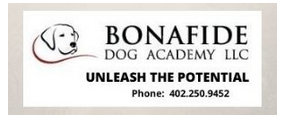- Do you subscribe to Dharma Dog Training’s Newsletter? You should.
- A Unique Campaign from The Humane Society of the United States
- Rabid bats in Omaha- Stay safe, prepared with these tips
- Springtime Activities in Omaha
- Mill Dog Monthly from Bailing Out Benji
- World Spay Day, Legislative Alert in Nebraska
- Attend the Nebraska Rescue Council’s monthly meeting this Saturday
- Five Hard-to-Ignore Reasons to Adopt!
- Paws in Pink to Benefit Breast Cancer Foundation
- VCA, Inc. Acquires MidWest Vet Specialists from Kansas State University
Pet Insurance Pros and Cons

Are you considering getting pet insurance for your beloved dog or cat and unsure if it is worth it? First, you need to be aware of some pros and cons of having pet insurance.
The good news is that pet insurance comes at a reasonable cost, and billing is relatively simple. You can also choose your vet and do not have to choose “within a network” with pet insurance. However, one of the downsides is that pet wellness exams are only sometimes covered.
Pet insurance can help manage the costs of maintaining your pet’s health. If you want to know about the pros and cons of pet insurance, read this article.
What Are the Pros of Pet Health Insurance
Pet insurance can provide peace of mind for the pet parent that they will have coverage if a health condition or emergency arises. Our primary responsibility is to keep our dogs and cats safe and happy; pet insurance may be part of that equation.
A recent survey showed that over 90 percent of millennials care about their pet’s health as much as their own. There needs to be more awareness regarding pet insurance in this country. The following includes the pros of pet insurance:
Pet Insurance is a Reasonable Cost
Every type of insurance comes at a cost, but getting pet insurance may be worth it. According to RSPCA, pet insurance is a valuable safety net to help ensure your cherished dog or cat can be treated without you having to make stressful decisions based on the cost of veterinary care.
The price of insurance for your pet varies depending on the following:
- Pet age
- Pet breed
- Spayed or neutered
- Prior claims history
- Coverage limits
- Deductible
- Coinsurance
- Copays
Since pre-existing conditions are rarely covered, you should consider pet insurance before your pet develops a health issue. According to CBS News, you typically pay about $15 to $40 monthly for a cat and $30 to $70 for a dog. So it may be a reasonable cost for your pet’s health.
You Can Choose Your Veterinarian
Unlike humans, you do not need an ” in-network ” vet with your insurance. This situation means you can choose the best vet for your pet or stick with the person who has been caring for your companion animal for years. Claim reimbursement is between you and your insurance provider, and the vet is not involved.
What Are the Cons of Pet Insurance
Although pet insurance has some substantial benefits, there are a few drawbacks. Certain conditions are not covered, as well as some primary care. The best way to handle pet insurance is to get it while your babies are still puppies and kittens.
While pet insurance offers peace of mind and is enticing, there may be benefits you will never even need. It would help if you determined what you can afford to put toward an insurance policy. The following includes the cons of pet insurance:
There Are Some Glaring Exclusions
With pet insurance, some exclusions, such as preventative care, may defeat the purpose of getting pet insurance altogether. Almost all pet insurance does not cover the cost of wellness exams, which is critical to caring for your pet. Dental care is another glaring exclusion, as are pre-existing conditions. Hereditary or congenital conditions are also not covered.
For example, brachycephalic dog breeds like Bulldogs or Boston Terriers are prone to breathing difficulties. Any condition related to breathing issues in this breed may not be covered, or insurance premiums would be higher. Vaccinations and spaying, and neutering are also not covered by insurance. Pet insurance may often require waiting periods before your coverage becomes effective.
It Does Not Work Like Human Insurance
With most pet insurance, you will pay the vet up front and are responsible for 100 percent of the costs. The vet’s office does not submit a claim to your insurance, but you will be the one to file the claim, and you will be reimbursed based on the insurance plan guidelines. You will still need to pay the vet bill while waiting for reimbursement.
Certain Animals May Be Restricted
Dogs and cats are covered, but exotic animals are another story. For example, if you have a couple of birds or guinea pigs, your coverage options may be limited. Some restrictions apply to particular breeds, and the pet’s age can affect whether or not they receive coverage. Some providers set an age limit, and the older the pet, the more likely you will encounter difficulties.
Conclusion
There are some pros and cons of having pet insurance. Pet insurance may be worth it if you enroll your sweet companion early on in their life. Your pet is a treasured family member, and you want to do what is best for them. Consider this and other factors when determining whether pet insurance is right for your pet.
Source:
Home – Headwaters Veterinary Center. https://headwatersvetcenter.com/
Latest News
-
Join Us at Pick A Pooch 2025: A Fun-Filled Weekend for the Whole Family
A Fun-Filled Weekend for Pet Lovers and Families Alike Mark...
- Posted 1 year ago
- 0
-
Beardmore Presenting Sponsor At This Years Pick-A-Pooch event
🐾 We are thrilled to announce that Beardmore Subaru is...
- Posted 1 month ago
- 0
-
How Having A Pet Can Change Your Life
Having a pet can open your heart in ways that...
- Posted 3 months ago
- 0
-
How To Improve The Life Of Your Senior Pet
Do you have an elderly fur baby and want to...
- Posted 3 months ago
- 0
-
Springtime Activities To Enjoy With Your Furry Friends
Are you preparing for warmer weather and want some ideas...
- Posted 4 months ago
- 0
-
Pros And Cons Of Microchipping Your Pets
Have you considered whether your pets should be microchipped and...
- Posted 5 months ago
- 0
-
The Best New Fun Toys For Dogs And Cats
The Best New Fun Toys For Dogs And Cats Did...
- Posted 5 months ago
- 0
-
Heartfelt Ways To Show Your Pet You Love Them
Did you know there are more ways to show your...
- Posted 6 months ago
- 0



















You must be logged in to post a comment Login